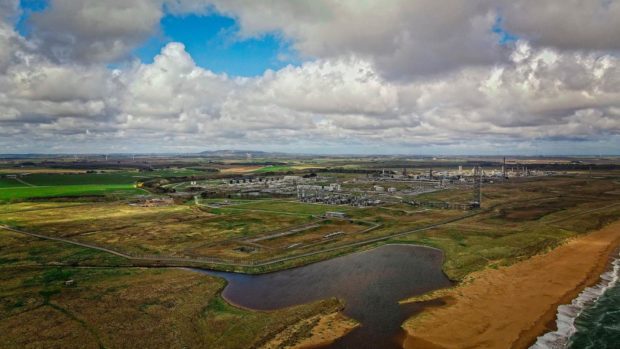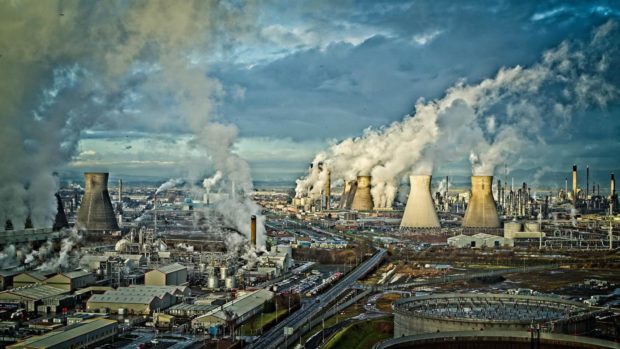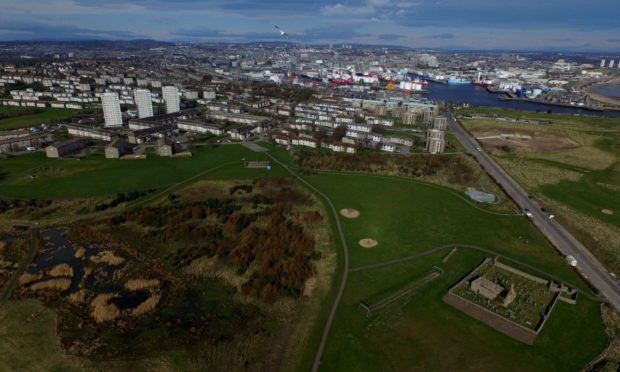Low-carbon energy projects in the north-east could create up to 20,600 jobs in the next ten years, a new report has predicted.
A range of projects currently in various stages of planning, including the development of carbon capture and storage (CCS), hydrogen, and direct air capture (Dac) technology, are part of what is being called the “Scottish cluster”. This is being led by partners behind the Acorn CCS and hydrogen schemes at St Fergus near Peterhead, Storegga, Shell and Harbour Energy, alongside other regional stakeholders including Scotland’s largest emitters of carbon at Grangemouth.
The cluster is currently vying for a share of up to £1bn of UK Government funding through the CCS track 1 cluster programme, and estimate the work would start supporting jobs as early as 2022.
The process to decide which of the UK’s industrial clusters will receive a proportion of the funding is expected to take place in October, according to the Department for Business, Energy & Industrial Strategy (Beis). The Scottish cluster bid was submitted earlier this month.
The partners aim to store nearly half a gigatonne of CO2 under the North Sea around 100km out from the St Fergus gas terminal by 2050. The project also has plans to develop technology that sucks carbon out of the atmosphere, known as direct air capture (Dac).
However it is hydrogen production, with an expected capacity of 3.7GW by the mid 2030s, which will account for the highest proportion of the direct and indirect jobs supported by the Scottish cluster, the report found.
Where will carbon come from?
An issue for CCS is where will the carbon come from? The Scottish cluster counts nine different sources including, around 1 million tonnes per year from the INEOS and Petroineos sites at Grangemouth.
Eight of the CO2 sources should be operational by 2027 and they include two of the gas terminals at the St Fergus Gas Complex, SSE and Equinor’s Peterhead Carbon Capture Power Station as well as the proposed large-scale DAC facility.
The cluster also plans for a significant expansion after 2030, driven largely by CO2 from shipping customers via Peterhead Port.
The partners said domestic and international shipping customers will be “welcome from the start”, with Peterhead Port reception facilities being commissioned in 2026. This is expected to provide with around 3Mt/pa of CO2 from domestic shipping, expected by 2030, and CO2 from ship imports through Peterhead Port ultimately expected to exceed 9Mt/pa.
Low carbon projects ‘vital’ for jobs
Alan James, director of Storegga said: “This analysis of the Scottish cluster’s impact illustrates not only how vital the Scottish cluster is to meeting the UK’s net zero by 2050 pledge, but also just how important it will be for direct and indirect highly skilled employment in the years and decades ahead.
“This is particularly important here in Scotland as workers in the oil and gas industry see new opportunities in the low-carbon sector as we move steadily towards net zero in 2045.”
He added: “There is simply no time to lose.”
North-east Scotland as a global leader in energy transition
Sir Ian Wood, chair of ETZ Ltd which is leading plans to establish the Energy Transition Zone (ETZ) alongside the £350million South Harbour expansion in Aberdeen, said:
“Today’s report highlights the economic importance of fast-tracking energy transition projects such as Acorn CCS and Acorn Hydrogen, which will contribute to net zero and provide on average 8,900 supply chain jobs per annum during the life of future Scottish CCS, hydrogen and direct air capture projects.
“Supporting exciting new energy transition opportunities such as these is the primary reason for developing the Energy Transition Zone in Aberdeen, which will play a pivotal role in establishing north-east Scotland as a global leader in energy transition and a future exporter of products, services, technologies and skills.
the Scottish cluster … has the added advantage of repurposing existing infrastructure.”
Sir Ian Wood.
“We encourage the UK Government to be ambitious and maximise the level of green recovery investment in all UK CCS projects, in particular the Scottish cluster which has the added advantage of repurposing existing infrastructure, as CCS will be key to enabling both the oil & gas sector and the wider UK industry to decarbonise.”
Scotland is the most cost-effective place for CCS and the most advanced
Just transition minister, Richard Lochhead, said the Scottish Government was “supportive” of the Acorn project, which is “considered the most advanced CCS project in the UK”.
He added that it was “critical” the Scottish schemes were chosen by the UK government for funding.
He said: “It is critical that the UK Government selects Acorn and the Scottish cluster to be among the first CCU clusters to be awarded funding through its current cluster sequencing process.
“Scotland is the most cost-effective place to begin CCUS in the UK given the capacity for CO2 storage in the North Sea and the existing oil and gas infrastructure available to repurpose for CO2 transport and storage.
“Vitally, there is also a huge opportunity for Scottish oil and gas firms, domestic supply chain companies and our wider economy to harness the skills and expertise of our current workforces to create many good, green jobs in the coming years.”
There is also a huge opportunity for Scottish oil and gas firms, domestic supply chain companies and our wider economy to harness the skills and expertise of our current workforces to create many good, green jobs in the coming years.”
Richard Lochhead, just transition minister
The economic impact report was commissioned by Storegga, the lead developer of the Acorn CCS and hydrogen project on behalf of the Scottish cluster and was conducted by the strategic energy consultancy Element Energy.


